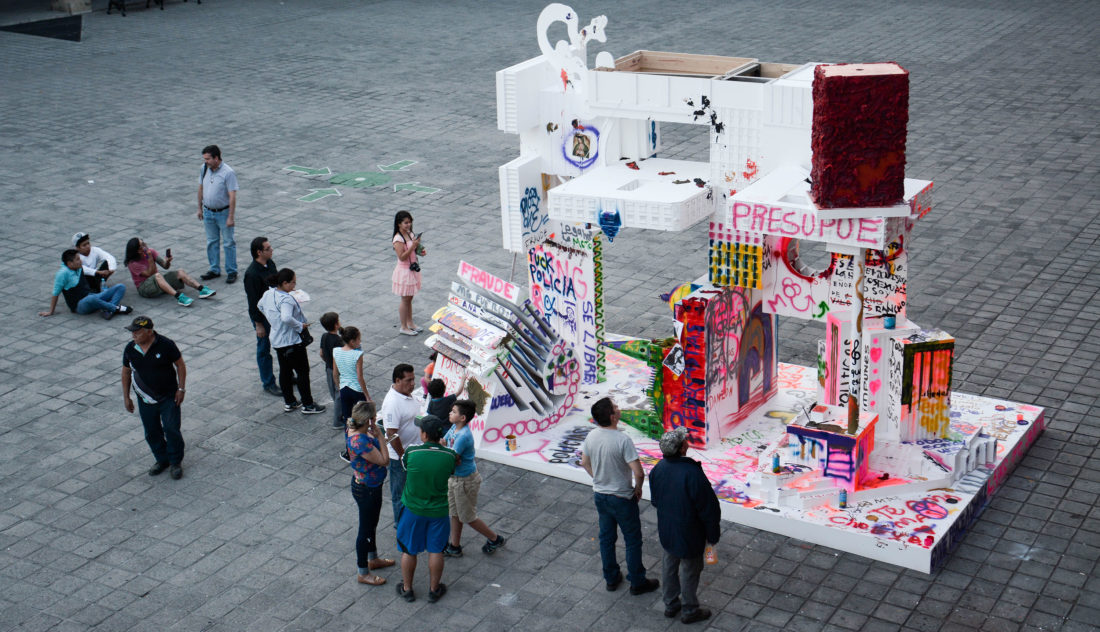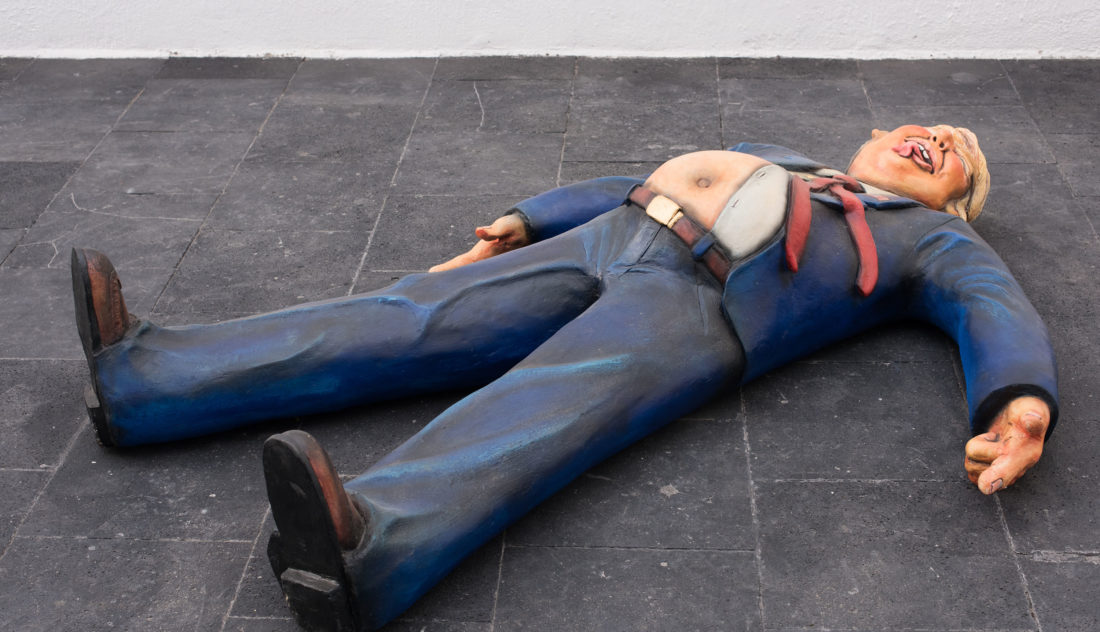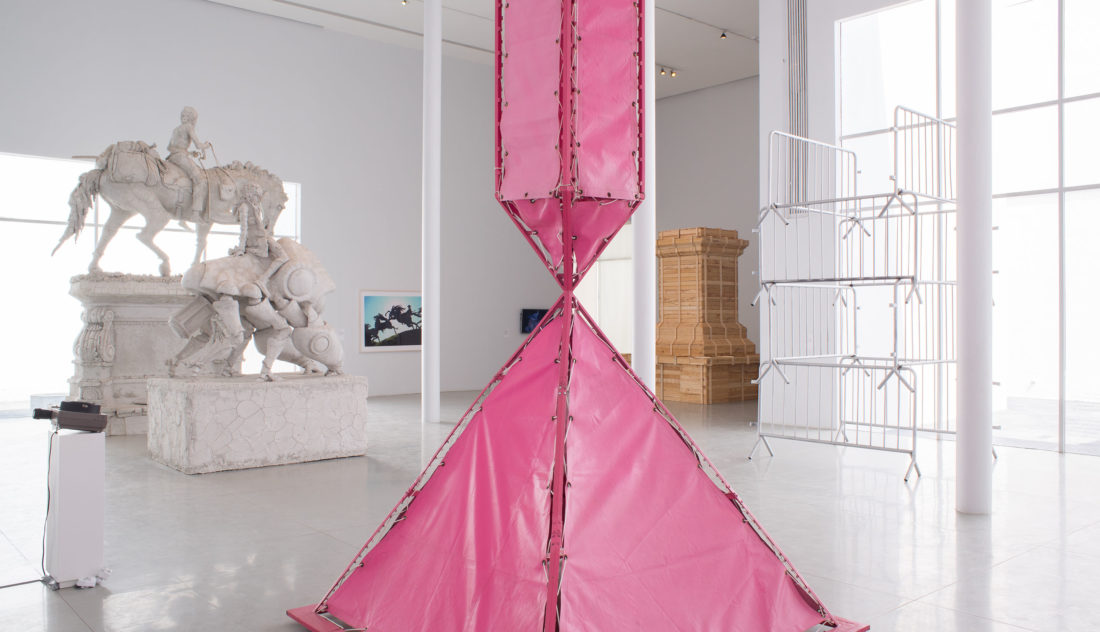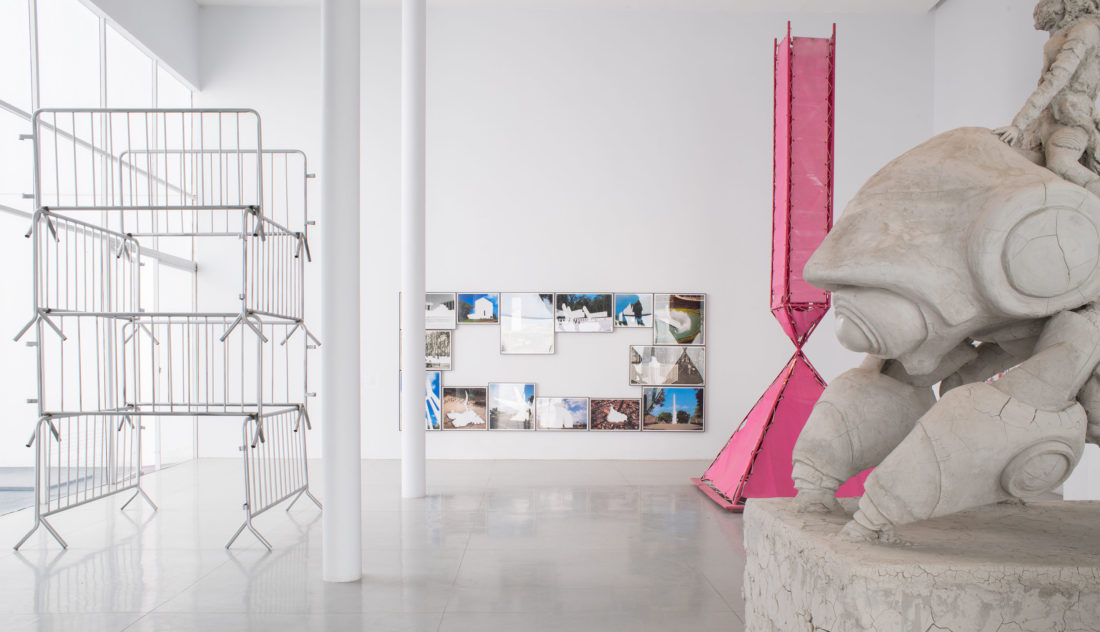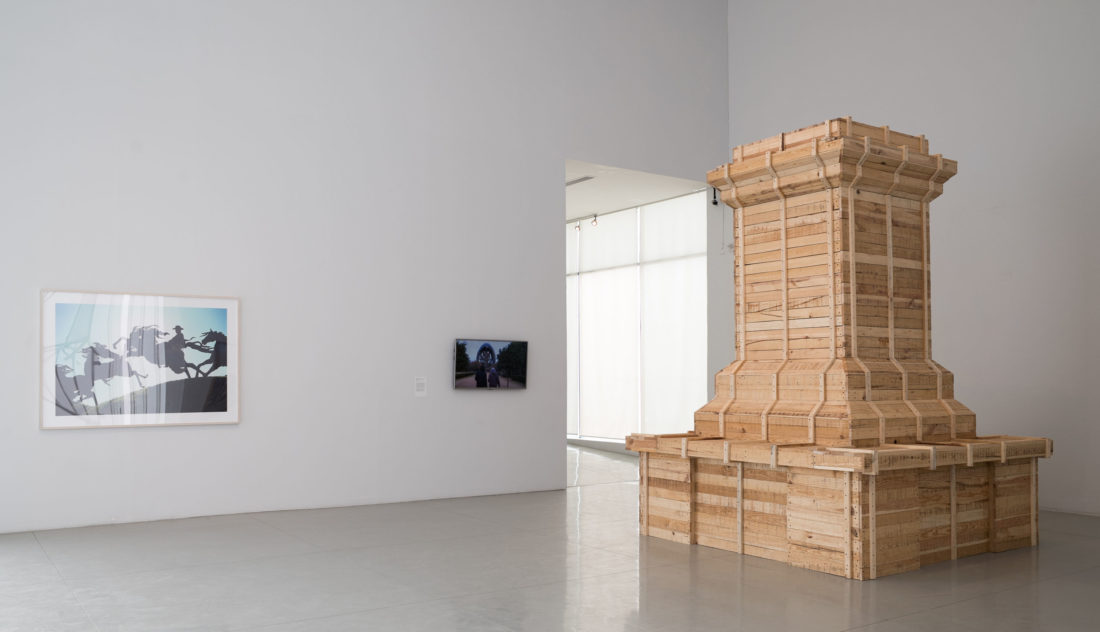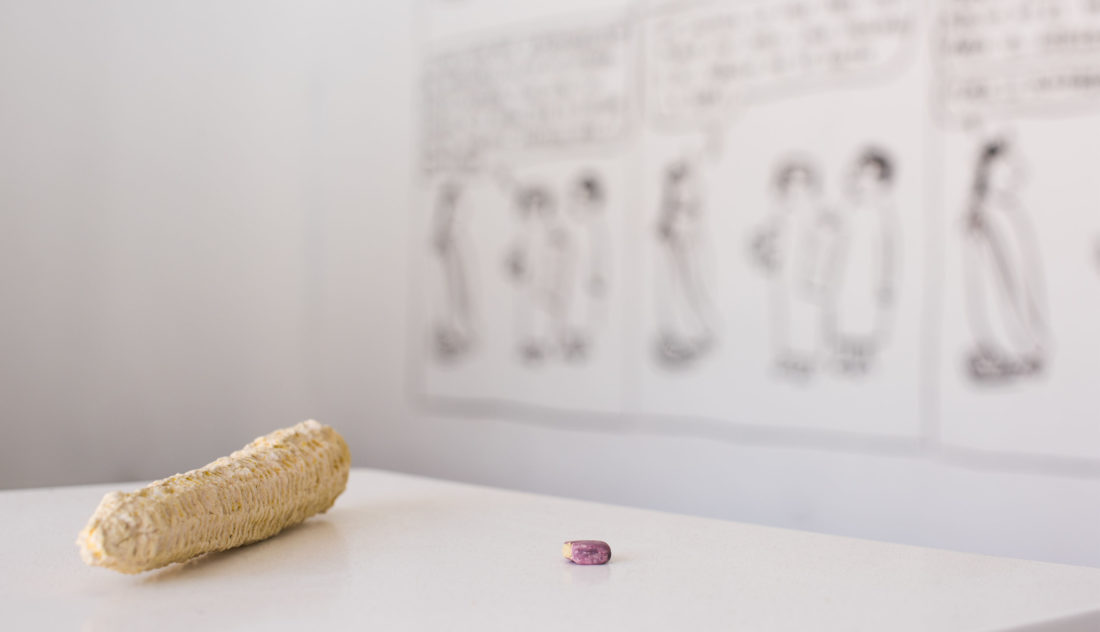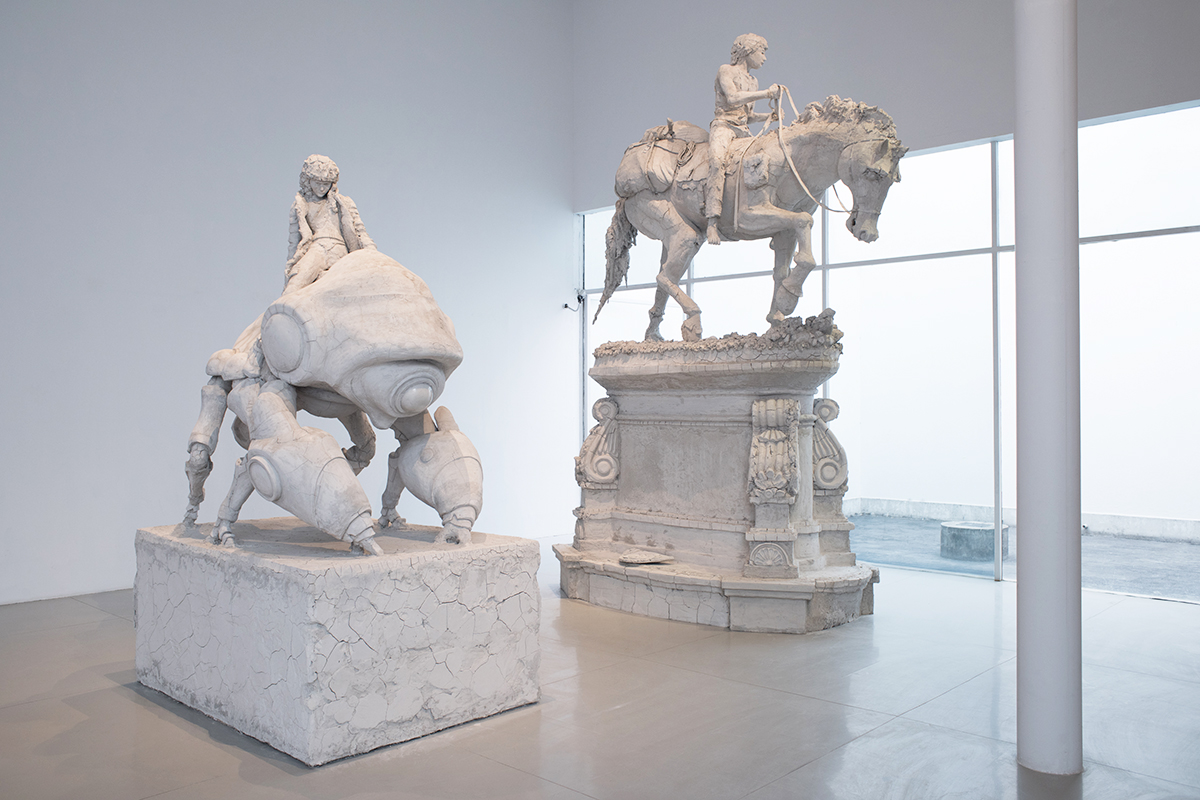Monumentos, anti-monumentos y nueva escultura pública
Eduardo Abaroa, Miguel Andrade Valdez. Julieta Aranda. Iván Argote, Diego Berruecos, Stefan Benchoam / Byron Mármol, Marcelo Cidade, Abraham Cruzvillegas, Jose Dávila, Helen Escobedo / Paolo Gori, Radamés “Juni” Figueroa / Melvin Laz, Mathias Goeritz, Alejandro de la Guerra, Cynthia Gutiérrez, Pablo Helguera, Juan Fernando Herrán, Ximena Labra, Runo Lagomarsino, Gonzalo Lebrija, Anuar Maauad, José Carlos Martinat, Pedro Meyer, Mario Navarro, Amalia Pica, Claudia Rodríguez, Ruta de la Amistad, Guillermo Santamarina / Colectivo Sector Reforma, Luis Miguel Suro, Tercerunquinto, Emanuel Tovar y Adrián Villar Rojas
Curator: Pablo León de la Barra
From March 31 through July 30, 2017
The result of an examination of public sculpture and urban monuments, the exhibition Monumentos, anti-monumentos y nueva escultura pública surveys contemporary artistic practices in Mexico and Latin America that question the idea of public sculptures, monuments, and memorials, inviting viewers to rethink the issues connected with both the real and the symbolic occupation of public space.
The exhibition is divided into three sections. First, there is a photographic archive of Mexican monuments assembled by Helen Escobedo and Paolo Gori in the 1980s, which includes images of public sculptures all over Mexico. The collection contains motifs that have come to be a part of Mexico’s national identity –busts of heroes, allegorical representations of the nation, reinterpretations of pre-Hispanic history–but also includes sculptures of wider imaginative scope, such as a monument to the snail, and others to aspects of everyday life.
The second section presents historical material related to the international project organized by Mathias Goeritz for the 1968 Olympic Games: The Route of Friendship, a series of monumental abstract sculptures installed in the vicinity of the various sporting venues, which involved the participation of twenty-two artists of different nationalities. These works are still preserved in Mexico City.
The exhibition continues with the work of contemporary artists who have dealt with these same themes. The roles played by political figures in dictatorships and authoritarian regimes, the commemoration of tragedies, and collective histories are documented through photography, videos, installations, and monumental sculptures that question the very nature of the format.
The project invites reflection on various pressing issues. What constitutes public space and who is authorized to use it? Is the erection of monuments an effective strategy for building an identity? Is public art a mechanism for the construction of ideologies? What possibilities are offered by contemporary art in our cities to engage us responsibly with public space, as agents and not just as spectators?



